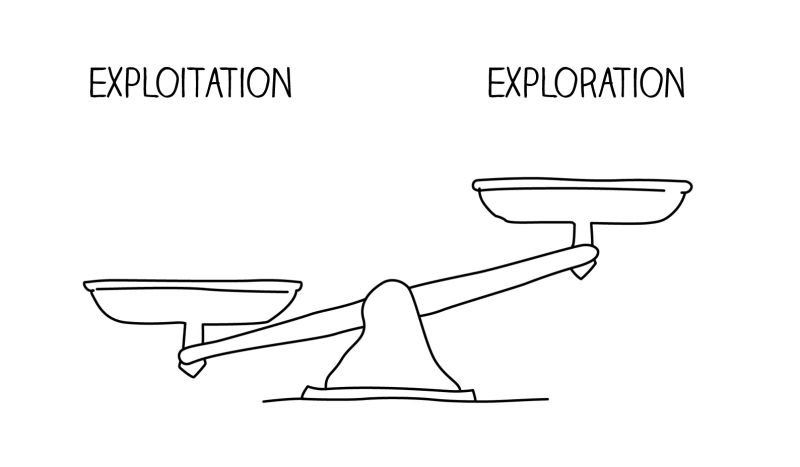This one is for board members in tech ventures: Are you thoughtfully balancing exploitation, experimentation, and exploration in your venture?
Last week, I asked if the mantra “focus, focus, focus” is the right framing for managing a venture.
As research has shown, for multiple reasons, it is not.
While being unfocused is obviously a recipe for failure, too narrow a focus also increases the risk of blindly running into a strategic dead end.
So, how do we tackle this challenge? Two approaches might help:
1. The Exploitation / (Experimentation) / Exploration Framework
The distinction between exploitation and exploration stems from organizational learning theories. James March introduced these concepts in the 1990s, emphasizing that organizations must balance these two activities to thrive. Exploitation is indeed about focus: focusing on the existing product, market, and making the most of them. Exploration, on the other hand, involves dedicating a clearly limited amount of resources to investigate alternative approaches across any of the nine fields of the business model canvas. A rule of thumb suggests 80% of resources go into exploitation and 20% into exploration, though these percentages may vary by company.
2. The Three Horizon Model
The Three Horizon Model, developed by McKinsey, complements the exploitation/exploration model by outlining a framework for managing innovation on the timeline:
– Horizon 1 focuses on core business growth (exploitation). Here, companies optimize and refine existing products and services to ensure that current revenue streams and growth remain robust.
– Horizon 2 represents adjacent opportunities (experimentation). In this horizon, businesses seek to expand into new areas that leverage existing capabilities, testing ideas that could evolve into future core offerings.
– Horizon 3 is about creating future options (exploration). This horizon encompasses long-term innovation efforts, including R&D initiatives that may not yield immediate results but are essential for future growth.
Importance of Balance
For startups, as with any company, striking a balance among these three activities is vital. The main difference between traditional companies and startups may be that the typical timeframes for Horizon 1 (1-3 years), Horizon 2 (2-5 years), and Horizon 3 (5-12 years) are often shorter, or they cycle faster. Thinking in months instead of years might be the more appropriate recommendation for a tech venture.
How many boards have you seen that supervise the company with an exploitation/experimentation/exploration framework or a Horizon 1/2/3 model?

